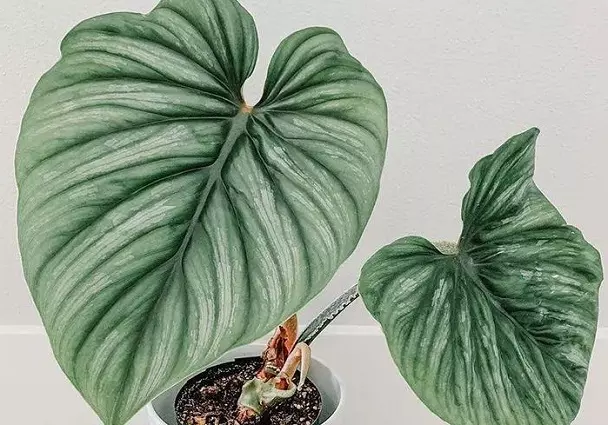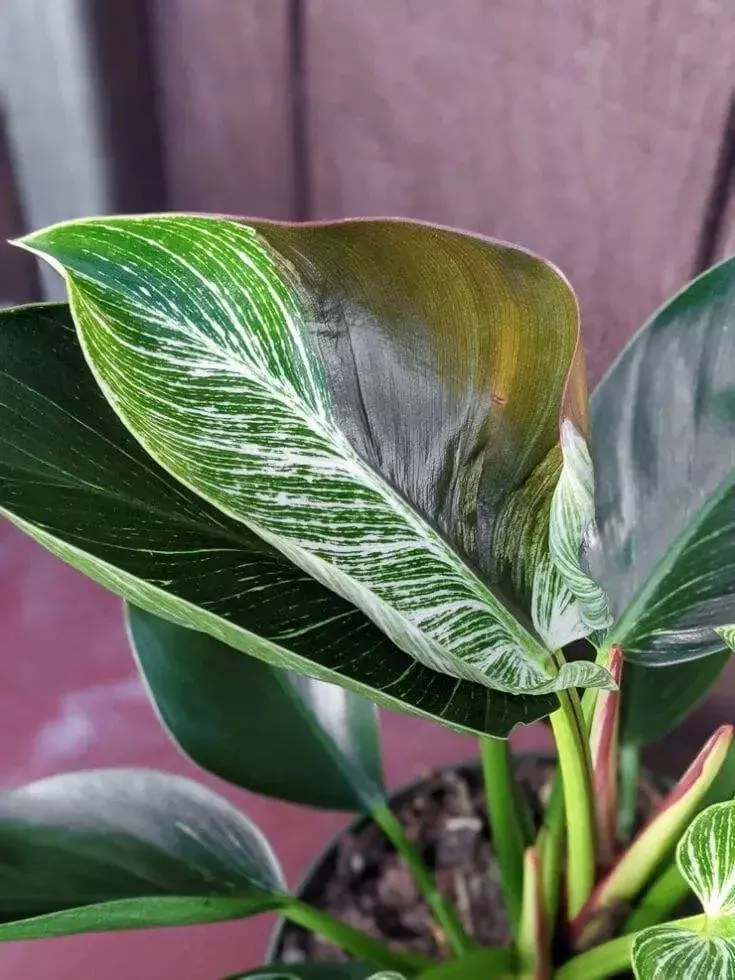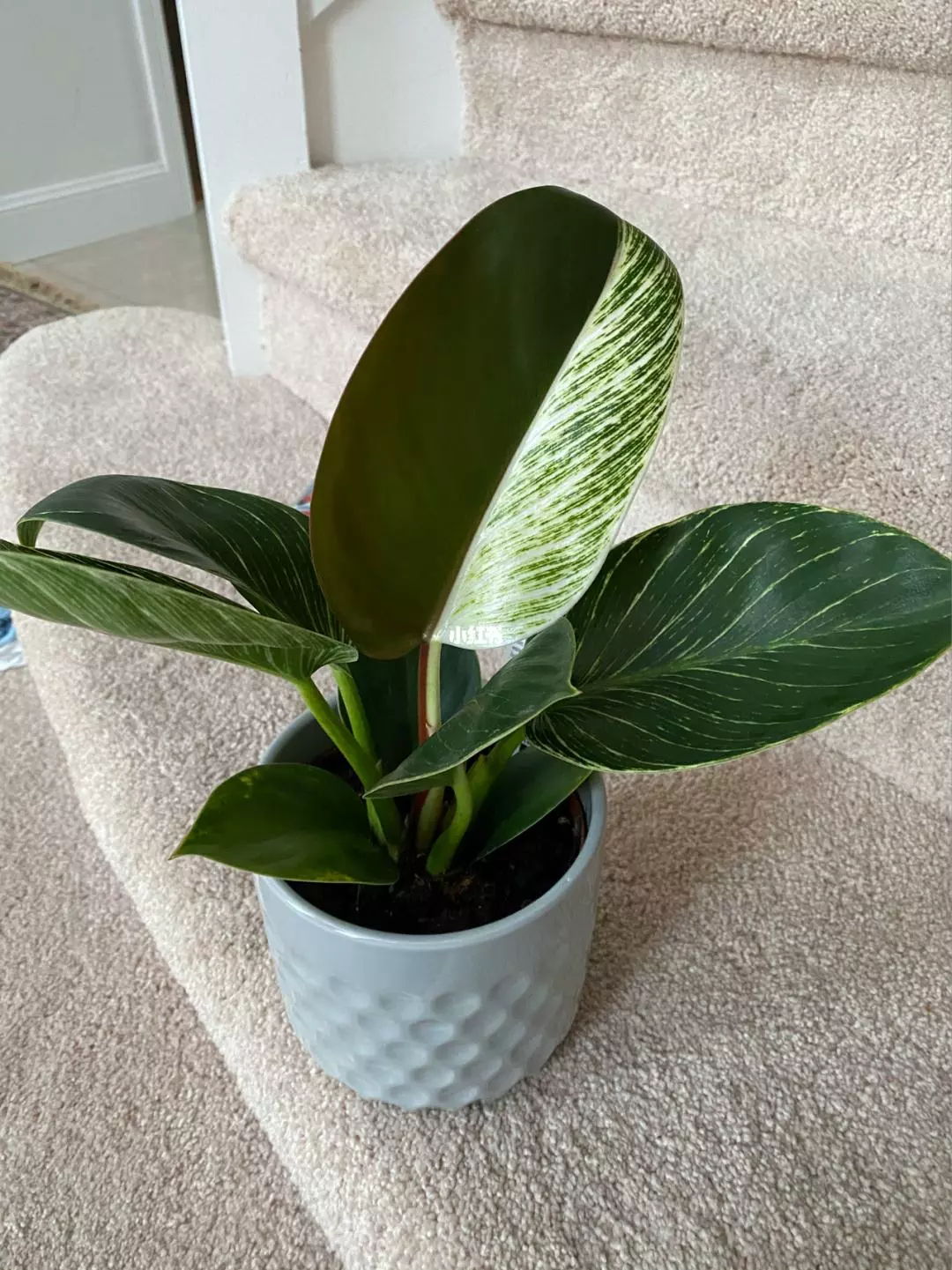Is Philodendron Birkin Poisonous To Pets?
Written by Ivy
Dec 01 2022

Philodendron Birkin is toxic and Philodendron can cause seizures, spasms, pain, and swelling in your cat or dog if they consume it. However, the toxicity of Philodendron Birkin is in the juice inside the plant, which will not affect us under normal maintenance. Moreover, Philodendron Birkin will not produce toxic gases and can be safely cultured. If Philodendron Birkin is pruned, we need to take protective measures to prevent its juice from contacting our skin.
 Philodendron Birkin is a perennial herb of Araceae. Native to tropical America. Philodendron Birkin is tendril or semi tendril. The stem has air roots and can climb other substances to grow. Gold Philodendron Birkin has strong vitality, can absorb all kinds of toxic gases and can purify the air. It is suitable for home, office buildings, hotels, hotels and other places.
Philodendron Birkin is a perennial herb of Araceae. Native to tropical America. Philodendron Birkin is tendril or semi tendril. The stem has air roots and can climb other substances to grow. Gold Philodendron Birkin has strong vitality, can absorb all kinds of toxic gases and can purify the air. It is suitable for home, office buildings, hotels, hotels and other places.
Philodendron Birkin's leaf juice will be poisoned at the entrance, and the rhizome and leaf will be poisonous. Human or animal mistakenly touching or eating its juice will cause discomfort in the throat and mouth, severe asphyxia, heart paralysis and even death. Skin contact with its juice will cause itching or strong irritation. Eye contact with juice can cause severe conjunctivitis and even blindness. Therefore, it is best not to plant Philodendron Birkin in families with children or pets. Philodendron Birkin has a certain degree of toxicity. Therefore, if you want to trim the blade or change the basin, wear gloves to avoid hand discomfort.
We can call the pet doctor immediately and they will tell you the right thing to do. Don't induce vomiting to your pet blindly. Ask your doctor for advice first. If the doctor says no, don't try to induce vomiting. But the veterinarian may suggest giving your pet an intravenous infusion, inducing him to vomit, or injecting it with activated carbon (which helps absorb toxins), etc.
Read More:
Introduction and Application of Philodendron BirkinCan We Keep Philodendron Birkin In The Bedroom?What To Do When Your Pet Is Poisoned By Philodendron Birkin?FAQsIs a Birkin Philodendron Toxic to Pets?Is Philodendron Toxic to Dogs Or Cats?What Happens If a Cat Eats Philodendron?Are All Philodendrons Toxic to Dogs?
Introduction and Application of Philodendron Birkin

Philodendron Birkin's leaf juice will be poisoned at the entrance, and the rhizome and leaf will be poisonous. Human or animal mistakenly touching or eating its juice will cause discomfort in the throat and mouth, severe asphyxia, heart paralysis and even death. Skin contact with its juice will cause itching or strong irritation. Eye contact with juice can cause severe conjunctivitis and even blindness. Therefore, it is best not to plant Philodendron Birkin in families with children or pets. Philodendron Birkin has a certain degree of toxicity. Therefore, if you want to trim the blade or change the basin, wear gloves to avoid hand discomfort.
Can We Keep Philodendron Birkin In The Bedroom?
Philodendron Birkin cannot be placed in the bedroom because of its lush branches and leaves, which will consume a lot of oxygen at night and affect the quality of sleep. When raising vine green velvet, we'd better use the soil with good drainage. Don't let it be directly exposed to strong light. You can put it on the indoor balcony or windowsill for maintenance. It is best to give it a growth environment of 16-26 ℃, and it is best to adjust the temperature to more than 5 ℃ in winter. We should always ensure that the basin soil is wet, but there should be no ponding.
What To Do When Your Pet Is Poisoned By Philodendron Birkin?
You can keep your pets in a safe place and keep them away from Philodendron Birkin so that pets can no longer eat Philodendron Birkin (you can clean up later). If you have other pets in your home, put them in a separate place so that they will not be exposed to toxic substances or pets you may have been poisoned.We can call the pet doctor immediately and they will tell you the right thing to do. Don't induce vomiting to your pet blindly. Ask your doctor for advice first. If the doctor says no, don't try to induce vomiting. But the veterinarian may suggest giving your pet an intravenous infusion, inducing him to vomit, or injecting it with activated carbon (which helps absorb toxins), etc.
Read More:
- Why My Philodendron Birkin Leaves Curling?
- How Much Light Does Philodendron Birkin Need?
- How To Save My Philodendron Birkin Yellow Leaves?
- How To Propagate Philodendron Birkin?
- Is Philodendron Birkin Rare?
- How To Water Philodendron Birkin?
- What Is The Best Soil For Philodendron Birkin?
- Philodendron Birkin Care & Propagation Guide
FAQs
Is a Birkin Philodendron Toxic to Pets?
Toxicity This plant is toxic if ingested so it is best kept out of reach of children and pets.Is Philodendron Toxic to Dogs Or Cats?
The philodendron family, which includes Swiss cheese plant, heartleaf and fiddle-leaf philodendron, have a toxicity level of mild to moderate for cats and dogs. oral irritation, discomfort and swelling in the lips, tongue, and mouth, excessive drooling, and vomiting, as well as difficulty swallowing.What Happens If a Cat Eats Philodendron?
Philodendron leaves contain calcium oxalate crystals which, if ingested, irritate the gastrointestinal tract from the mouth to the stomach and intestines. Cats with the condition drool and display signs of abdominal discomfort. Your philodendron will hurt if your kitten chews on it, paws at his mouth, and then rubs his eyes.Are All Philodendrons Toxic to Dogs?
Philodendrons are popular indoor plants that are also widely used in southern US tropical landscaping. All parts of all types of philodendrons are toxic to most animals, including dogs, cats, horses, birds and even people.Latest Updated
- Benefits of Bugleweed - 7 Science-backed Health Benefits
- Bugleweed Dangers & Side Effects - Is It Poisonous?
- How to Plant Evergreen Trees - What You Should Know
- When to Plant Evergreens - Grow Guide for Evergreen Trees
- 12 Wonderful Evergreen Shrubs for Your Garden
- 12 Popular Evergreen Plants with Pictures for Beginners
- When And How To Prune A Lilac Bush Like a Pro
- How to Grow & Care for Lilac Vine (Hardenbergia Violacea)
- Japanese Lilac Tree (Syringa Reticulata) Care & Propagation Guide
- Shumard Oak Pros and Cons - What to Know
Popular Articles
- Winter maintenance of Antirrhinum Majus
- How to Grow Terminalia Mantaly Tree
- How to Grow and Care for Crossostephium Chinense
- How to grow Antirrhinum Majus in spring
- Peristeria Elata (Dove Orchid) Profile: Info & Care Guide
- Underwatered Snake Plant (Sansevieria Trifasciata) - Signs And How To Fix
- How to Care for Brazilian Jasmine Plant (Mandevilla Sanderi)
- How to Grow & Care for Graptopetalum Purple Delight in Summer
- Rosa Chinensis (China Rose): Plant Growing & Care Tips
- How to Care for Baby Sun Rose (Aptenia Cordifolia)